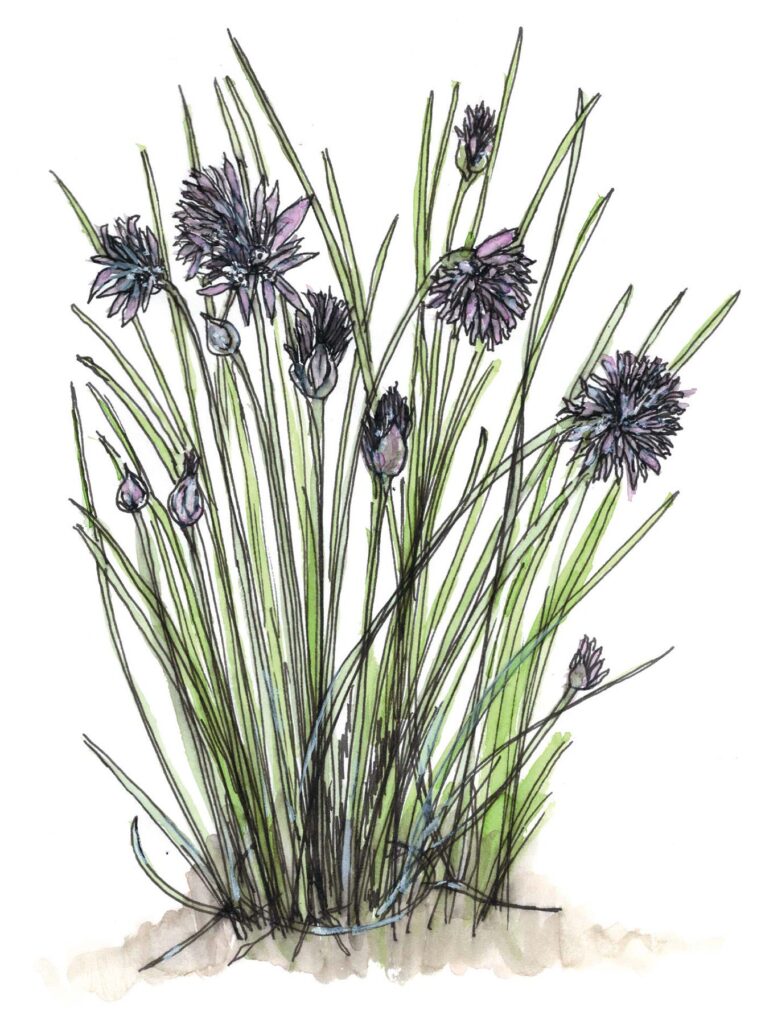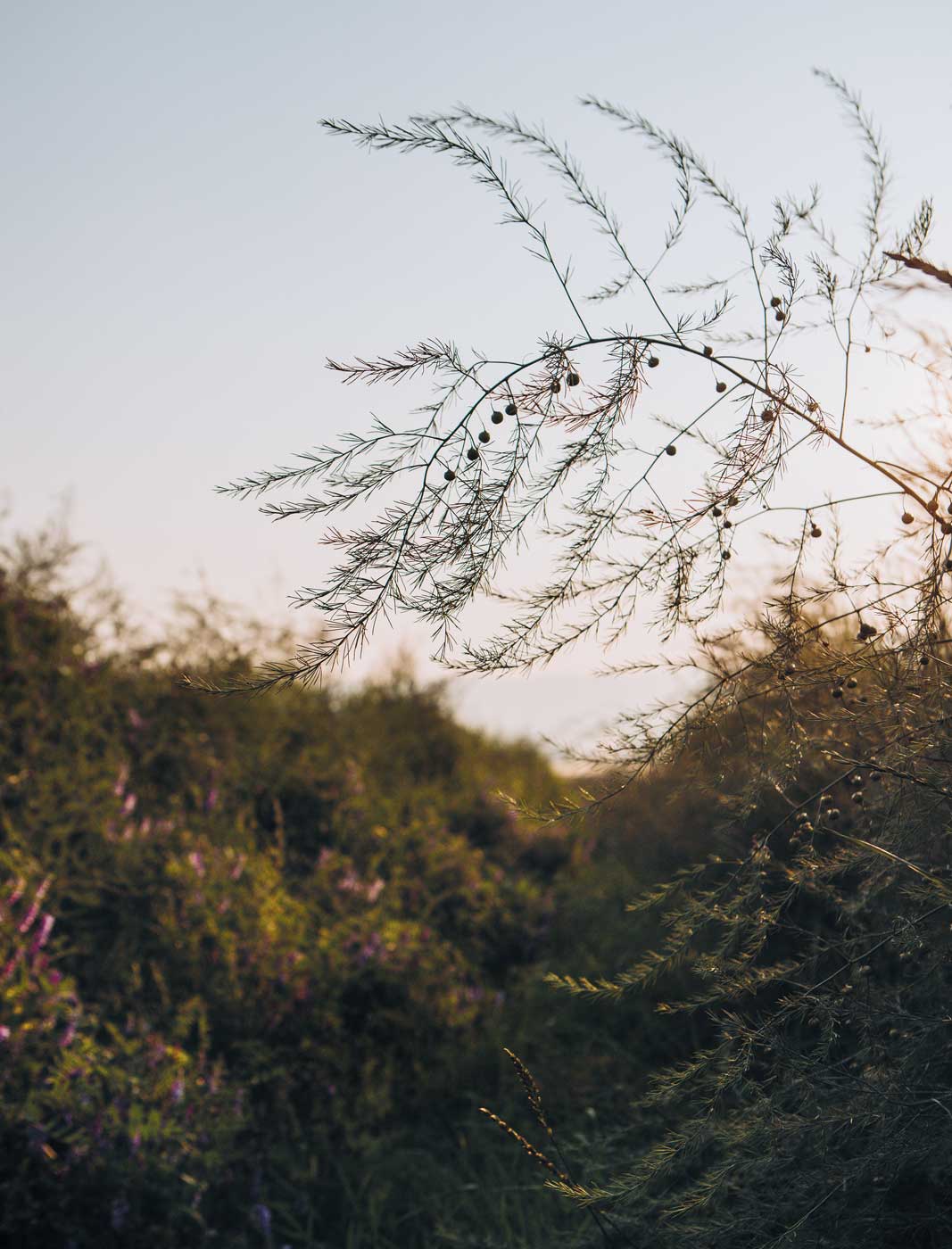LEMON BALM
Before you get excited and plant one of these in your garden, know this: Lemon balm is in the mint family, which means it’s going to spread, and you will likely have it forever. So make sure you like the way it looks, tastes, and attracts bees. If you’re just testing things out, plant it in a pot.
I planted my first little lemon balm a couple years back after picking up a plant start at Amaltheia Organic Dairy’s spring farm sale. I thought it would act more like basil, but instead it takes up more and more of the garden each year, making the bees very happy. That gives a hint to the plant’s ancient origin: “Honeybee” is the meaning of the Greek word melissa, and lemon balm’s scientific name is Melissa officinalis.
Lemon balm makes a wonderful tea whether you use fresh leaves and stems or dried leaves. For a cold brew, crush 4 sprigs in a quart jar, fill with water, and let sit for 30 minutes or as long as overnight. Also nice: Sliver the leaves and add to salads, especially those that include strawberries or watermelon and a little goat cheese.
BLUEBERRIES
Everyone knows that blueberries are wonderful for breakfast and make a great smoothie, but they’re also great at dinnertime, especially added to a salad dressed with a tart vinaigrette. So when you find summer blueberries, keep a plate out all day long and eat them for breakfast, lunch, dinner, and dessert.
Speaking of dessert, when you want something blueberry, think cream—ice cream, ricotta, Greek yogurt, coconut cream, or whipped cream (which can be whipped heavy cream, sour cream, crème fraîche, mascarpone, etc.) slightly sweetened with a sprinkle of powdered sugar. And don’t forget lemon: Blueberries and lemon are a classic pairing in any form but especially lemon curd served with fresh blueberries and enjoyed with a scone, shortcake, or biscotti.
Add blueberries to muffins and quick breads, and bake them into pies and cobblers with peaches or nectarines. When using 100-percent blueberries, brighten their sweetness with a spritz of lemon and some zest.

CHIVE BLOSSOMS
If you have a little dirt, plant some chives. They give and give all season long and the blossoms are just as tasty as the greens. Pluck the petals and stir them into goat cheese or sprinkle them on deviled eggs, scrambled eggs, egg salad sandwiches, or salads. A friend of mine likes to infuse vinegar with the blossoms, which I think would be quite good.
Cut the blossoms close to the base of their stem, which is hard and not edible. This will encourage the plant to make more tender chive leaves. It’s OK to leave some blossoms on your plant; just keep in mind that they will go to seed and propagate more chives. When the season comes to an end, cut the chives down to a low mound; they will die back during winter and be the first green you’ll see next spring.




